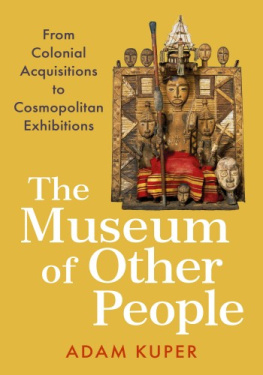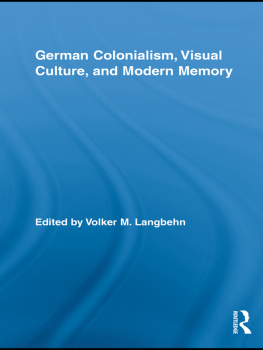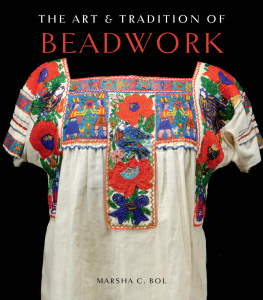THE MUSEUM OF OTHER PEOPLE
ALSO BY ADAM KUPER
Culture: The Anthropologists Account
Anthropology and Anthropologists: The British School in the Twentieth Century
The Reinvention of Primitive Society: Transformations of a Myth
Incest and Influence: The Private Life of Bourgeois England
THE MUSEUM OF OTHER PEOPLE
ADAM KUPER
First published in Great Britain in 2023 by
Profile Books Ltd
29 Cloth Fair
London
EC1A 7JQ
www.profilebooks.com
Copyright Adam Kuper, 2023
1 3 5 7 9 10 8 6 4 2
Typeset in Dante by MacGuru Ltd
The moral right of the author has been asserted.
All rights reserved. Without limiting the rights under copyright reserved above, no part of this publication may be reproduced, stored or introduced into a retrieval system, or transmitted, in any form or by any means (electronic, mechanical, photocopying, recording or otherwise), without the prior written permission of both the copyright owner and the publisher of this book.
A CIP catalogue record for this book is available from the British Library.
ISBN 978 1 800810 91 4
eISBN 978 1 800810 92 1
There is no document of civilisation that is not at the same time a document of barbarism.
Walter Benjamin
C ONTENTS
Jomard in Paris Siebold in Leiden Thomsen in Copenhagen Prehistory, evolution and ethnography the challenge of Pitt Rivers Humboldts Legacy Klemm in Leipzig Bastian in Berlin Worlds Fairs the Trocadro Museum of Ethnography the Muse de lHomme Surrealism Second World War Origins the Western Frontier the Bureau of American Ethnology the US National Museum The Boas myth in American anthropology the great debate evolutionary and regional models Boas as collector Origins Darwin and Harvards scientists Putnam and prehistory The Chicago Fair the Smithsonian vs. Putnam and Boas the American Museum of Natural History the end of the Museum Age in Anthropology Collections of body parts race studies repatriation and burial Wars and looting the history of restitution the Benin Bronzes the politics of restitution The invention of primitive art from Paris to New York museums of primitive or tribal art in the twenty-first century Culture and civilisation European folk museums identity politics in the late twentieth century tribal museums and the National Museum of the American Indian the dialogical museum Exhibits, permanent and temporary
ACKNOWLEDGEMENTS
Two old friends of mine made their careers in the Museum of Other People: Igor Krupnik, chair of anthropology and curator of circumpolar ethnology at the National Museum of Natural History, Smithsonian Institution; and Enid Schildkraut, curator in the division of anthropology at the American Museum of Natural History from 1973 to 2005, and then director of exhibitions at the Museum for African Art in New York City until 2011. They were always ready to talk about museums, to discuss my findings, to challenge my judgements; and they read (and sometimes reread) all the chapters in the book. I also had a home team of experienced and equally uncomplaining and indefatigable readers: my older son, Simon Kuper, who is a wonderful writer; my cousin, Richard Kuper, who was head of a publishing house; and my partner, Jytte Klausen, who did her best to ensure that I didnt disappear down some rabbit hole.
Other colleagues came to my aid when asked, with information, criticism and, really quite often, encouragement. I am grateful to them all: Mary Jo Arnoldi, curator for African arts and ethnology at the National Museum of Natural History at the Smithsonian Institution in Washington, DC; Nigel Barley, assistant keeper of ethnography, British Museum; Margit Berner, curator, Museum of Natural History, Vienna; Lissant Bolton, keeper of the department of Africa, Oceania and the Americas at the British Museum; Laura van Broekhoven, director of the Pitt Rivers Museum, University of Oxford; Patricia Capone, curator, Peabody Museum of Archaeology and Ethnology, Harvard University; Nlia Dias, professor at the Centre for Research in Anthropology, Lisbon, Portugal; Rudolf Effert, Institute of Area Studies, Leiden University; Benot de LEstoile, CNRS, Paris; Carlos Fausto, professor of anthropology, National Museum, Federal University Rio de Janeiro; Thomas Fillitz, professor of anthropology, University of Vienna; Michael Fisher, former editor for science and medicine, Harvard University Press; Jonathan David MacLachlan Fine, head of the Ethnological Museum, Berlin State Museums; David Gellner, professor of social anthropology, University of Oxford; Clare Harris, curator for Asia at the Pitt Rivers Museum and professor of visual anthropology, University of Oxford; Kirsten Hastrup, professor of anthropology, University of Copenhagen, and president of the Danish Royal Academy of Sciences and Letters, 200816; Karl-Heinz Kohl, professor emeritus of ethnology at Frankfurt Goethe University and former director of the Frobenius Institute for Research in Cultural Anthropology; Christine Laurire, CNRS, Paris; John Mack, keeper of ethnography at the British Museum, 19902004 and, since 2004, professor of world art at the University of East Anglia; Jonathan Marks, professor of anthropology, University of North Carolina; Pierre de Maret, emeritus professor of archaeology, Universit libre de Bruxelles, former rector of the university, and president of the scientific commission of the Royal Museum of Central Africa in Tervuren; Malcolm McLeod, keeper of ethnography at the British Museum, 197490, director of the Hunterian Museum and Art Gallery, 199099; John Picton, emeritus professor of African art, University of London; Barbara Plankensteiner, director of the Museum am Rothenbaum World Cultures and Arts (MARKK) in Hamburg; Alexis von Poser, deputy director of the Ethnological Museum and the Museum of Asian Art at the Berlin State Museums; Gina Rappaport, head archivist, national anthropological archives, Smithsonian Institution; Antonio Saborit, director, National Museum of Anthropology, Mexico City; Anna Schmid, director of the Museum of Cultures in Basel; Robert Storrie, keeper of ethnology, Horniman Museum, London; Anne-Christine Taylor, director of research and education, Muse du quai Branly, 200513; Han Vermeulen, research fellow, Max Planck Institute for Social Anthropology in Halle, Germany; and Sarah Walpole, archives officer, Royal Anthropological Institute.
Penny Gardiner, a peerless copyeditor, asked tactful questions, corrected infelicities, and greatly improved my punctuation. Thanks also to Penny Daniel, who masterminded the production process, and Andrew Franklin, a brilliant publisher.
THE MUSEUM OF OTHER PEOPLE
Since at least the fifteenth century, Europes 1 per cent collected Greek and Roman antiquities, Renaissance art and Chinese ceramics. Their gardens flaunted exotic trees. For entertainment, perhaps instruction, they had cabinets of natural curiosities and artificial curiosities with freaks of nature, bizarre devices, instruments of torture, titillating images.
In the last decades of the eighteenth century a few grand collections were put on public show. The venues came to be known as museums: shrines of the muses. At first only select visitors were admitted. The Hermitage insisted on court dress. The Louvre gave privileged access to artists. As late as 1808 anyone who wished to enter the British Museum had to submit a written application. Gradually more and more museums opened to the public, though children were not welcome.
In 1848 two Chinese scholars were dispatched to examine these new institutions. They reported that there were jigulou , buildings for collections of bones, wanzhongyuan , gardens of everything, huage , pavilions of paintings, jibaoyuan , courtyards of treasures, and junqilou houses of military equipment. After visiting the British Museum, a Japanese delegation coined a new term, hakubutsukan , mansion of boundless things.
Next page






